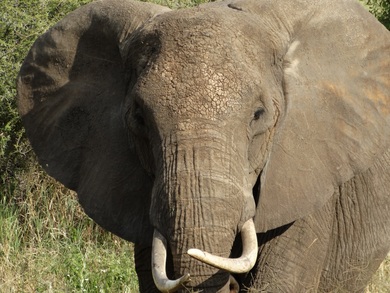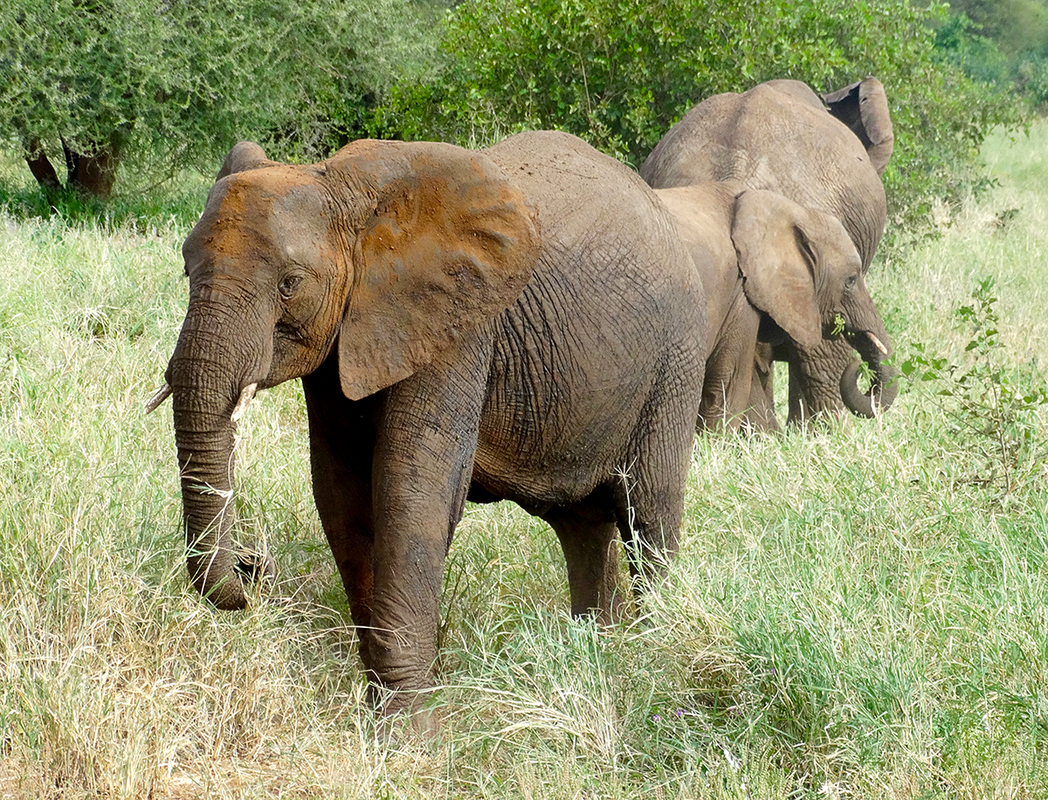 Cash strapped game reserves in Swaziland are holding 18 elephants hostage and threaten to kill them if they are not sold to American zoos. Managers of the group of reserves called Big Game Parks, claim that they have too many elephants and the pachyderms are destroying habitat and crowding out other species like the rhino. The truth of the matter is that the enclosure around the reserves are too small. Swaziland is tiny in comparison to other African nations. The whole country would fit neatly inside the perimeter of Kruger National Park in neighboring South Africa. The elephant population is only about 40 strong in Swaziland and the managers of Big Game Park want to reduce that by about half. And this comes at a time when poachers are killing almost 100 elephants a day in other parts of Africa – threatening the very existence of the species. It is pointless to take elephants out of the wild and ship them 9,000 miles away to be held in captivity. The reserve managers do not need to look far to find natural habitat closer to home – including their own government run reserves in Swaziland. This is not the first time this has happened. In 2003, 11 elephants from the same game reserves were sold to US zoos. This is beginning to sound like the reserves in Swaziland are nothing more than breeding farms. And one must also question the ethics and moral values of the administrators of a zoo that would want to even consider taking wild elephants. But that is exactly what the Dallas Zoo and its cohorts are planning to do. All imports of animals recognized by the Convention on International Trade in Endangered Species (CITES) must first be approved by the US Fish and Wildlife Service. Buying and selling of African elephants and ivory is prohibited under CITES. However, the Dallas Zoo is requesting permission for an exception to this policy. It is unethical and detrimental to the health of elephants to separate them from their natural family herds and banish them to a life of captivity. Doing so will most certainly not provide any conservation benefit to the species! It is dishonest for the reserve managers to claim that they have “too many” elephants when the species has been completely exterminated in neighboring elephant range countries. I view this as merely a tactical ploy to sell off the herd to the highest bidder with complete disregard to the health and welfare of the elephant. You can do something! Like Tide For Tusks on Facebook. Follow us on Twitter. Show your support. Care. Share. Give! www.tidefortusks.org
0 Comments
 Globally, the average cost of an assault rifle is about $534. In Africa the cost is about $200 less – or around $334 for an AK-47. With the increasing demand for ivory in Asia, an average pair of elephant tusks that are sold on the black market can bring about $33,500. A criminal gang of poachers knows that one elephant can net about 100 AK-47 assault rifles – enough to arm a small army. You may recall that the Somali terrorist group that attacked unaware shoppers in the Westgate Mall in Kenya used ivory that was poached from neighboring countries to pay for its maneuvers. So what is a wild elephant really worth? I’m not sure I could place a clear dollar value on the price of seeing a bull elephant making a trumpet call to ward off a bachelor male approaching too closely to a safe guarded harem. Or witnessing a female tusker gently nudge her months-old calf up the steep banks of a mud hole and shepherd it to safety with the rest of the herd. Too often, we take for granted the things that stir our emotional inner being – a spectacular waterfall, a vivid sunset, an eagle soaring across the sky, or a deer grazing in a distant field. I view these moments as being priceless. Someone less passionate and more calculated might give them a price tag – such as an admission to enter a park, a fee for a glimpse through a mounted viewfinder, or a paid guided tour through a wildlife preserve. With the global expansion of a middle class and more disposable income available for the savvy traveler to see nature, are people willing to spend money on seeing a wild elephant? An article I recently read about travel indicated that the average daily rate for an African safari is around $800 to $1,000 (typically lasting ten days to two weeks). With most African villages lacking basic infrastructure (running water, sewer and reliable electricity) the continent may be underdeveloped, but the safari lodges and camps are among the most glamorous and expensive in the world. It is estimated that tourism in Tanzania alone, with wildlife safaris at the top of the list, generate around 2 billion dollars annually. People want to see elephants in the wild! Conservation of elephants benefits all people - it pours cultures together creating an economy of wildlife. Animal enthusiasts from all over the world can see the majestic creature in its natural habitat, contributing to the local economy through the hiring of rangers and guides; staying at lodges and camps that in turn hire local people as hospitality staff, porters, chefs, waiters, bus boys, and housekeepers. There is a considerable, sustainable value for maintaining the conservation of elephants living in the wild – the whole community prospers. That is why it was shocking for me to read that the Zimbabwean Minister of Environment, Water and Climate, Oppah Muchinguri, would blame a ban on sport hunting by the United States for increased poaching. She was quoted by the Associated Press as saying, “All this poaching is because of American policies. They are banning sport hunting. An elephant would cost $120,000 in sport hunting, but a tourist pays on $10 to view the same elephant.” That may be true, but what happens when there are no more elephants to be hunted or seen in the wild? The African elephants are in an extreme dire situation. It is estimated that there are only 350,000 elephants in the wild today. In 2013 alone, Tanzania reported losing about 10,000 elephants – or on average about 30 a day. Poachers are responsible for about 90 percent of these deaths that occur in the national parks and wildlife reserves – simply to feed the illegal ivory trade. Huge amounts of ivory are being smuggled out of Tanzania to supply illicit markets in Asia. The large scale of elephant poaching and ivory trafficking have major safety and economic implications for Tanzania. The decline in elephant populations and the presence of armed poachers in protected areas could jeopardize the future of tourism and seriously impact the national economy. Back to my original question: What is a wild elephant really worth? If you use the formula offered by Zimbabwean Minister Muchinguri, then there are only about $420 billion worth of elephants living in the wild today. According to the World Wildlife Fund if the current trend for poaching continues, then the African elephant will become extinct in ten years – and they will be worth nothing. You can do something! Care. Share. Give! www.tidefortusks.org #tidefortusks |
AuthorRandy Mecredy is the cofounder and CEO of Tide for Tusks. Archives
April 2016
Categories |

 RSS Feed
RSS Feed
